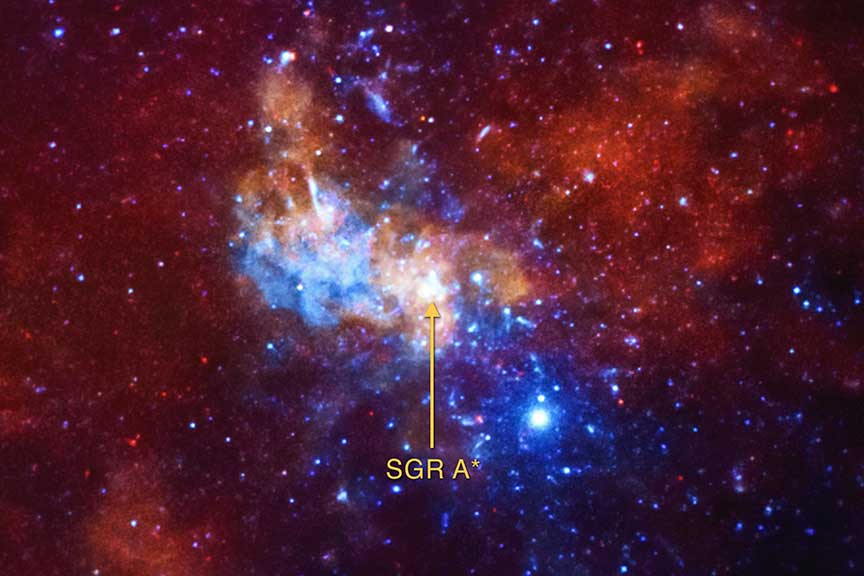A new study using NASA’s Chandra X-ray Observatory and NSF’s Very Large Array has revealed some fascinating facts about the supermassive black hole at the center of our Milky Way galaxy, called Sagittarius A* or Sgr A* for short.
The study found that Sgr A* is spinning rapidly, causing the spacetime around it to bend, giving it the shape of a football.
Scientists used an excellent method combining X-ray and radio data to determine how fast Sgr A* was spinning based on how stuff was moving around it. They discovered that Sgr A* is rotating at about 60% of its maximum speed and has about 90% of its maximum spin energy.


Credit: NASA/CXC/Univ. of Wisconsin/Y.Bai, et al.
This spinning action squashes the space around Sgr A* like a football. The more it spins, the flatter the football shape becomes.
The yellow-orange stuff you see swirling around in the illustration represents gas moving around Sgr A*. Eventually, this gas falls into the black hole, crossing its point of no return, called the event horizon. Inside the football shape, but outside the event horizon, is a cavity.
The blue blobs show jets shooting out from the poles of the spinning black hole. When black holes spin, they release energy like these jets. Looking down on the black hole from the top, along the barrel of the jet, spacetime is a circular shape. If there’s more material around Sgr A*, it could become more active with stronger jets.
To figure out the spin of Sgr A, scientists used the “outflow method,” which looks at the relationship between the black hole’s spin, its mass, and the stuff around it. The collimated outflow produces the radio waves, while the disk of gas surrounding the black hole is responsible for the X-ray emission. Combining data from Chandra and the Very Large Array, they were able to pin down Sgr A‘s spin.
This study sheds light on the behavior of supermassive black holes like Sgr A* and helps us understand how they shape the universe around them.
Journal Reference:
- Daly, Ruth A, Donahue, Megan et al. New black hole spin values for Sagittarius A* obtained with the outflow method. Monthly Notices of the Royal Astronomical Society. DOI: 10.1093/mnras/stad3228